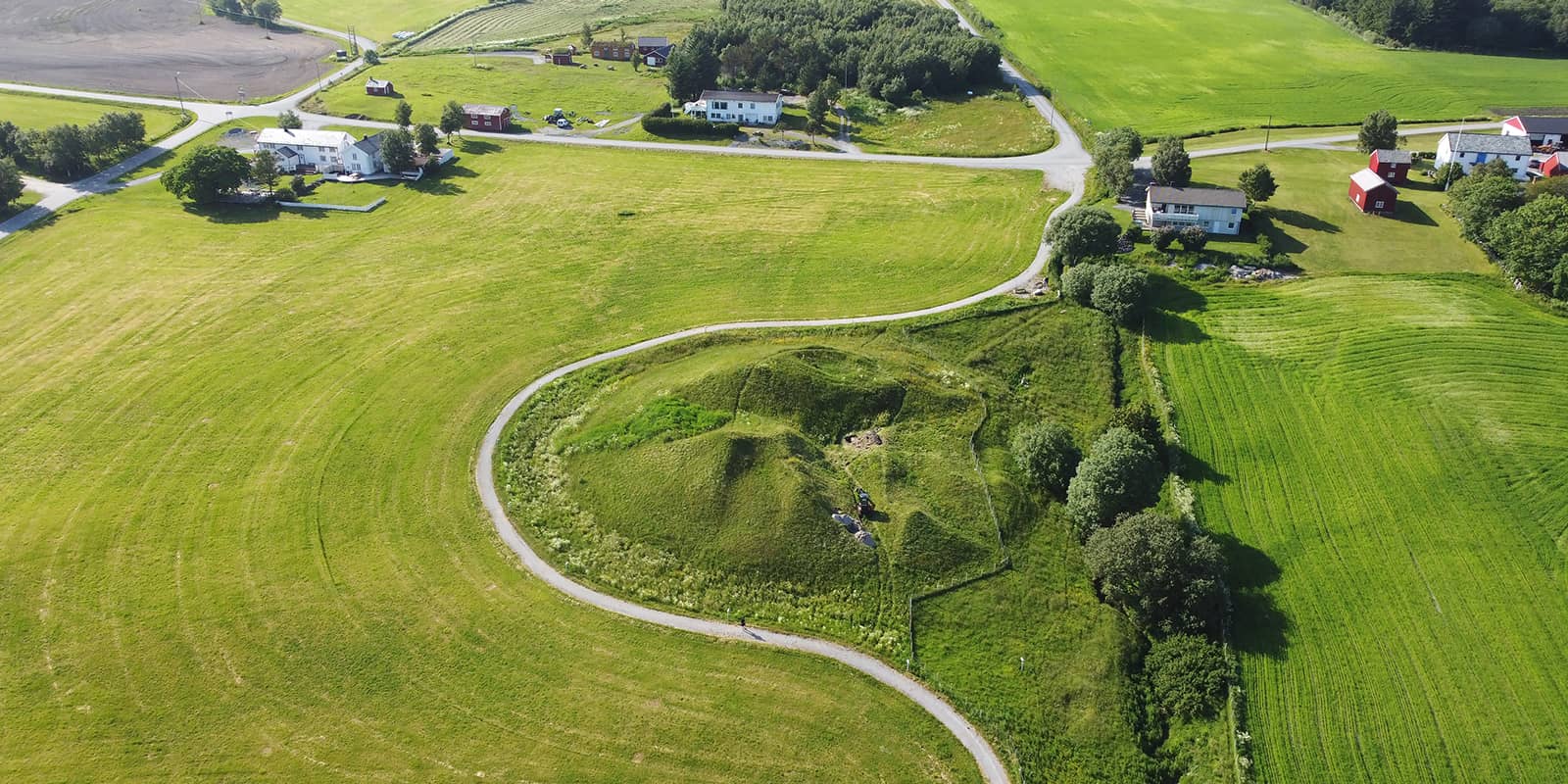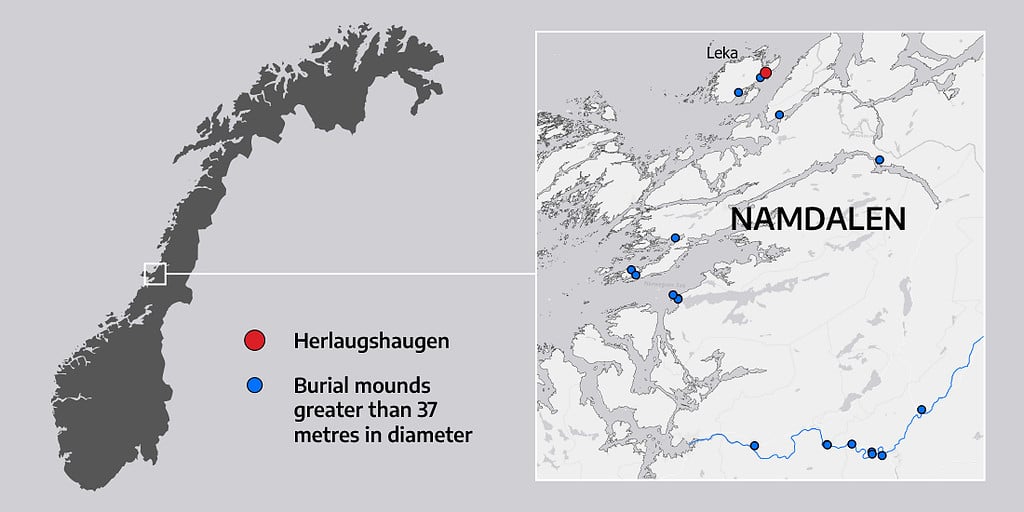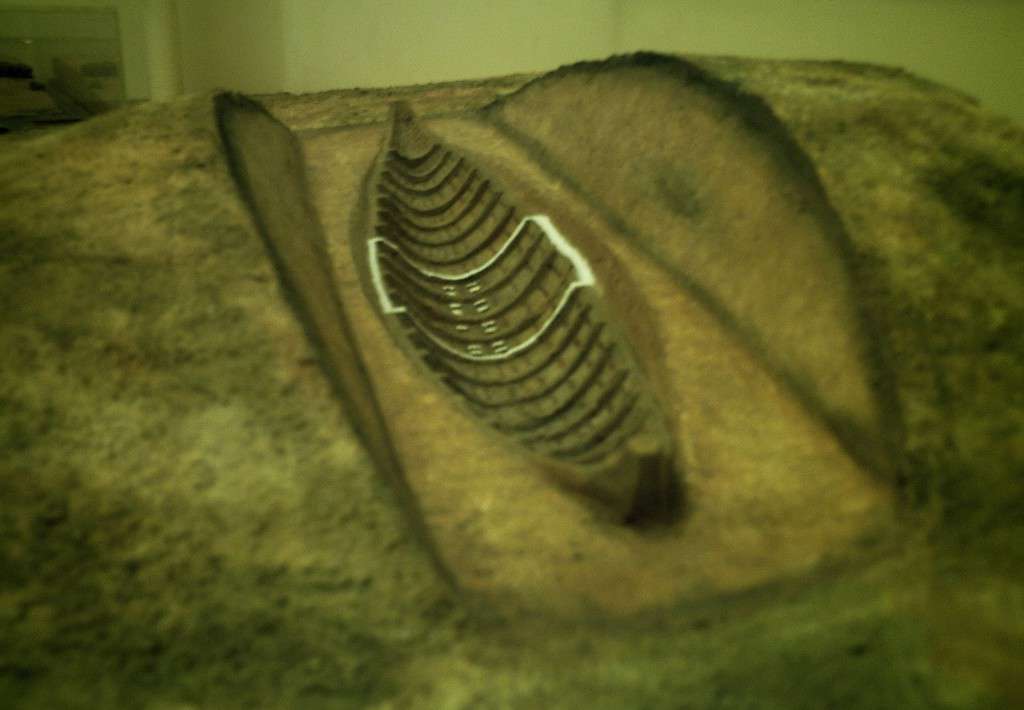
The Vikings had rich mythological beliefs, with intricate stories of gods, goddesses, and other worlds. Ship burials were linked to these beliefs, serving as a journey to mythical places of the afterlife, such as Valhalla, the hall of slain warriors. Ship burials were often reserved for high-status individuals such as chieftains, warriors, and nobles. The size and richness of the burial ship served as a status symbol as well — somewhat similar to pyramids in Egypt and South America.
But it’s really surprising to find a ship burial mound from before the Age of the Vikings.
“The mound was constructed in approximately 700 CE. This is called the Merovingian period and precedes the Viking Age. This dating is really exciting because it pushes the whole tradition of ship burials quite far back in time,” said Geir Grønnesby, an archaeologist at the Norwegian University of Science and Technology (NTNU) University Museum.

Sailing through history
The Vikings were renowned for many reasons, but perhaps above all, they were amazing seafarers. They went all the way to America and roamed Europe from Scandinavia to the Mediterranean. The history of Vikings is intricately tied to ships. In fact, the Age of Vikings started when they began building large, potent ships. But this new ship burial puts a new spin on that.

You don’t build a ship of this size just for the burial. You’d build it beforehand and then use it. This is a sign that Vikings could build large ships a very long time ago.
“It tells us that people from this area were skilled seafarers — they could build big ships — much earlier than we previously thought.”
This doesn’t necessarily mean that we have to push back the start of the Viking age, but it does put a new perspective on it. The burial mound itself is a sign of great wealth — wealth that wouldn’t have come from farming. “I think people in this area have been engaged in trading goods, perhaps over great distances,” the archaeologist mentions.
The ship burial mound
The mound itself is well known. It was excavated three times during the 1700s, and used to feature a wall, iron rivets, a bronze cauldron, animal bones, and a seated skeleton with a sword. However, although the skeleton was displayed at Trondheim Cathedral School for a time, no one really knows what happened to it afterwards. In fact, no one really knows where most of the findings in the mound went. “It is said that the bronze cauldron was melted down and made into shoe buckles,” says Grønnesby.
All the other finds have also disappeared, which makes it harder to paint a detailed picture of it. However, archaeologists do know that the Herlaugshaugen burial mound dates back to the Merovingian Period. Archaeological discoveries from this era are relatively rare. However, the earliest ship burials, such as those at Vendel and Valsgärde in Sweden, occurred during this time. These notable burials featured individuals laid to rest on down pillows, accompanied by elaborately crafted weapons and helmets.
Notably, this burial mound has some similarities to the famous ship burial in Sutton Hoo in England. The Sutton Hoo burial is also dated to the Merovingian Period, and is considered the oldest monumental ship burial.
“Should the ship in Herlaugshaugen burial mound be seen in connection with the burial mounds in Namdalen, Vendel, Valsgärde and Sutton Hoo, or is it a different phenomenon? This is a very exciting discussion, and something we want to explore further,” concludes Grønnesby.


